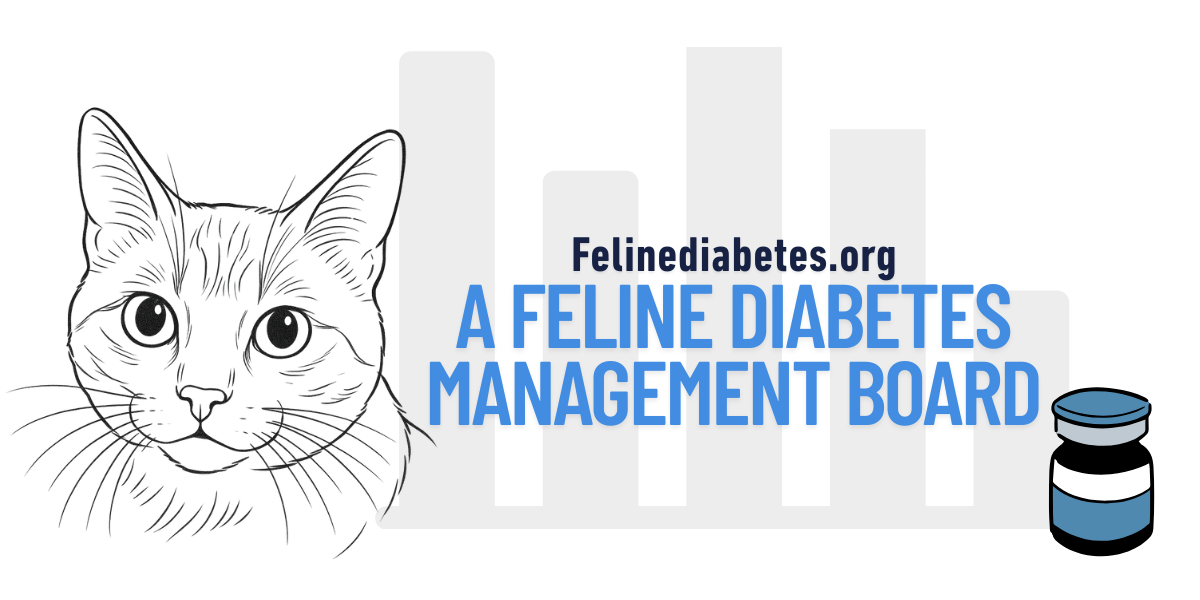Understanding Glucose Toxicity in Diabetic Cats
Glucose toxicity is a condition where prolonged high blood sugar levels (hyperglycemia) impair the pancreas's ability to produce insulin. This creates a cycle where elevated glucose levels further hinder insulin secretion, exacerbating diabetes.
Glucose Toxicity Overview
Amyloidosis Overview
Key Points:
Management Strategies:
Addressing glucose toxicity promptly can improve your cat's quality of life and may increase the chances of diabetes remission. Always consult with your veterinarian to develop an appropriate treatment plan tailored to your cat's needs.
- Tim
Change Log:
Created on 5/19/2025.
Sources:
Merck Animal Health. Glucose Toxicity and Hypoglycemia in Cats. Merck Veterinary Manual, www.merckvetmanual.com/endocrine-system/the-pancreas/glucose-toxicity-and-hypoglycemia.
Veterinary Practice News. “Management of Feline Diabetes Mellitus.” Veterinary Practice News, 12 Oct. 2020, www.veterinarypracticenews.com/management-of-feline-diabetes-mellitus/.
“Glucose Toxicity.” Pet Diabetes Wiki, petdiabetes.fandom.com/wiki/Glucose_toxicity.
Jill & Alex (GA). "Glucose Toxicity: What Is It & What Should I Do About It?" Feline Diabetes Message Board, 15 Sept. 2015, Glucose Toxicity: What is it & what should I do about it? | Feline Diabetes Message Board - FDMB.
Glucose toxicity is a condition where prolonged high blood sugar levels (hyperglycemia) impair the pancreas's ability to produce insulin. This creates a cycle where elevated glucose levels further hinder insulin secretion, exacerbating diabetes.
Glucose Toxicity Overview
Amyloidosis Overview
Key Points:
- Temporary Insulin Resistance: Chronic hyperglycemia can lead to tissues becoming less responsive to insulin, making blood sugar regulation more challenging.
- Pancreatic Damage: Extended periods of high glucose can damage the insulin-producing beta cells in the pancreas, potentially leading to permanent insulin dependence.
- Increased Insulin Needs: As tissues become resistant, higher insulin doses may be required to achieve the same glucose-lowering effect.
- Tissue Damage: High glucose levels can harm various body tissues, leading to complications like neuropathy and kidney issues.
Management Strategies:
- Early Intervention: Prompt diagnosis and treatment are crucial to prevent or mitigate glucose toxicity.
- Insulin Therapy: Administering insulin helps lower blood glucose levels, reducing the toxic effects on the pancreas and other tissues.
- Dietary Adjustments: Feeding a low-carbohydrate diet can assist in controlling blood sugar levels.
- Monitoring: Regular blood glucose monitoring helps track the effectiveness of treatment and adjust as necessary.
Addressing glucose toxicity promptly can improve your cat's quality of life and may increase the chances of diabetes remission. Always consult with your veterinarian to develop an appropriate treatment plan tailored to your cat's needs.
- Tim
Change Log:
Created on 5/19/2025.
Sources:
Merck Animal Health. Glucose Toxicity and Hypoglycemia in Cats. Merck Veterinary Manual, www.merckvetmanual.com/endocrine-system/the-pancreas/glucose-toxicity-and-hypoglycemia.
Veterinary Practice News. “Management of Feline Diabetes Mellitus.” Veterinary Practice News, 12 Oct. 2020, www.veterinarypracticenews.com/management-of-feline-diabetes-mellitus/.
“Glucose Toxicity.” Pet Diabetes Wiki, petdiabetes.fandom.com/wiki/Glucose_toxicity.
Jill & Alex (GA). "Glucose Toxicity: What Is It & What Should I Do About It?" Feline Diabetes Message Board, 15 Sept. 2015, Glucose Toxicity: What is it & what should I do about it? | Feline Diabetes Message Board - FDMB.
